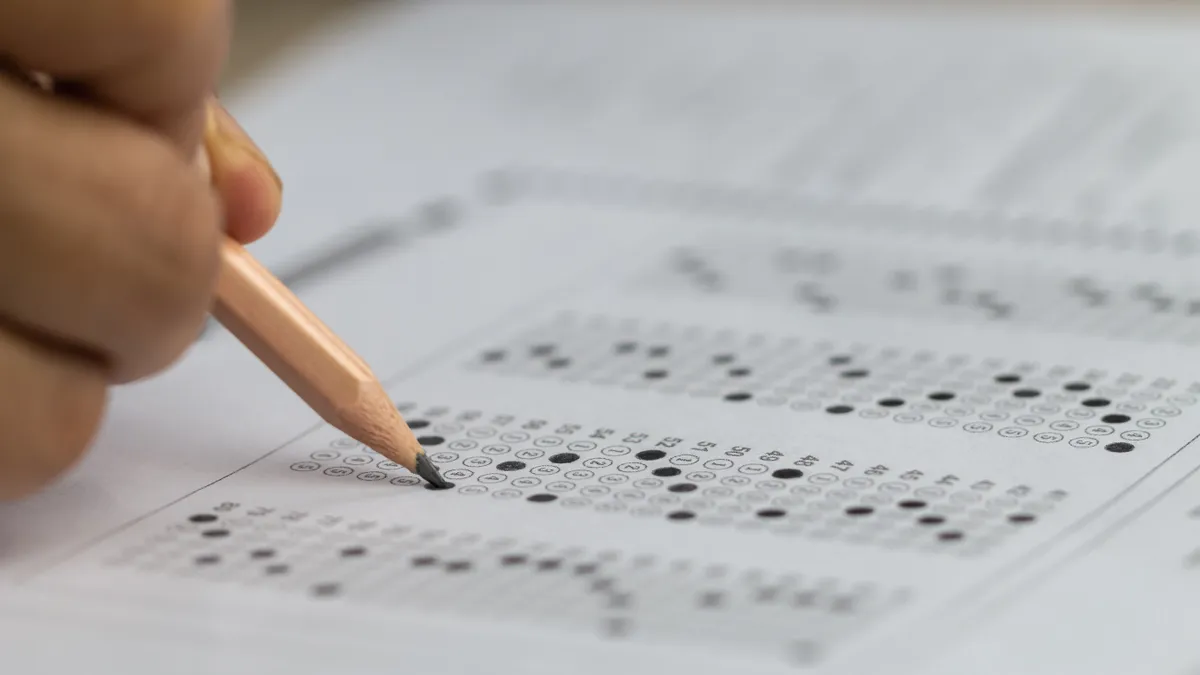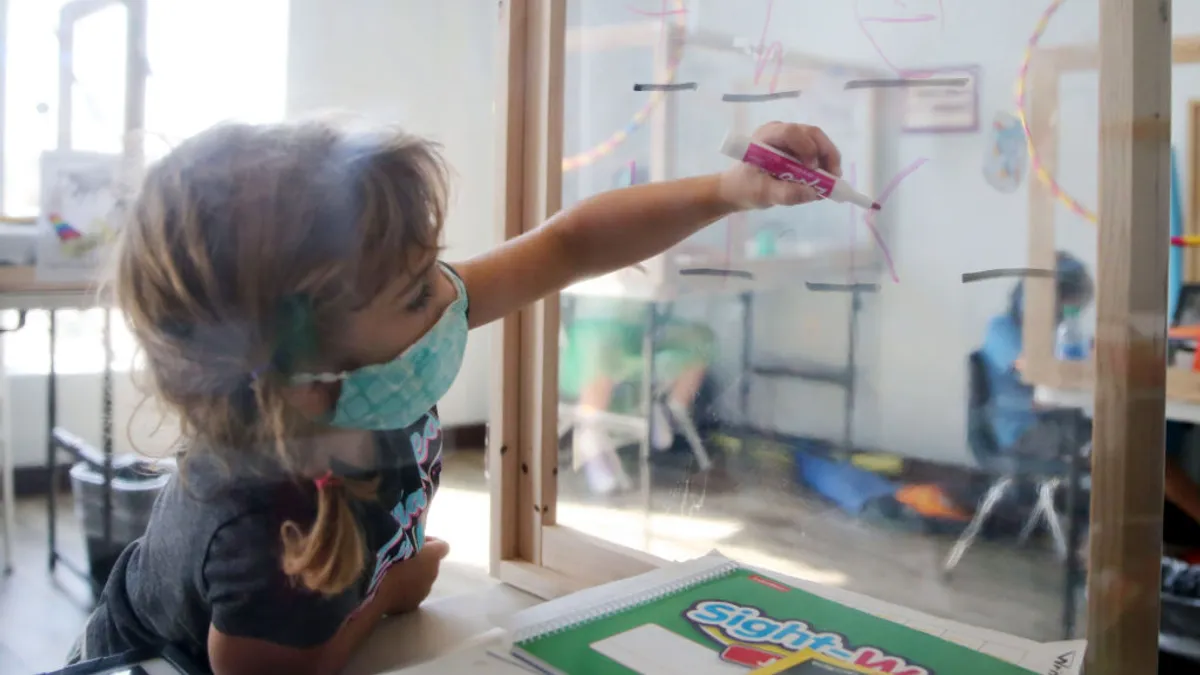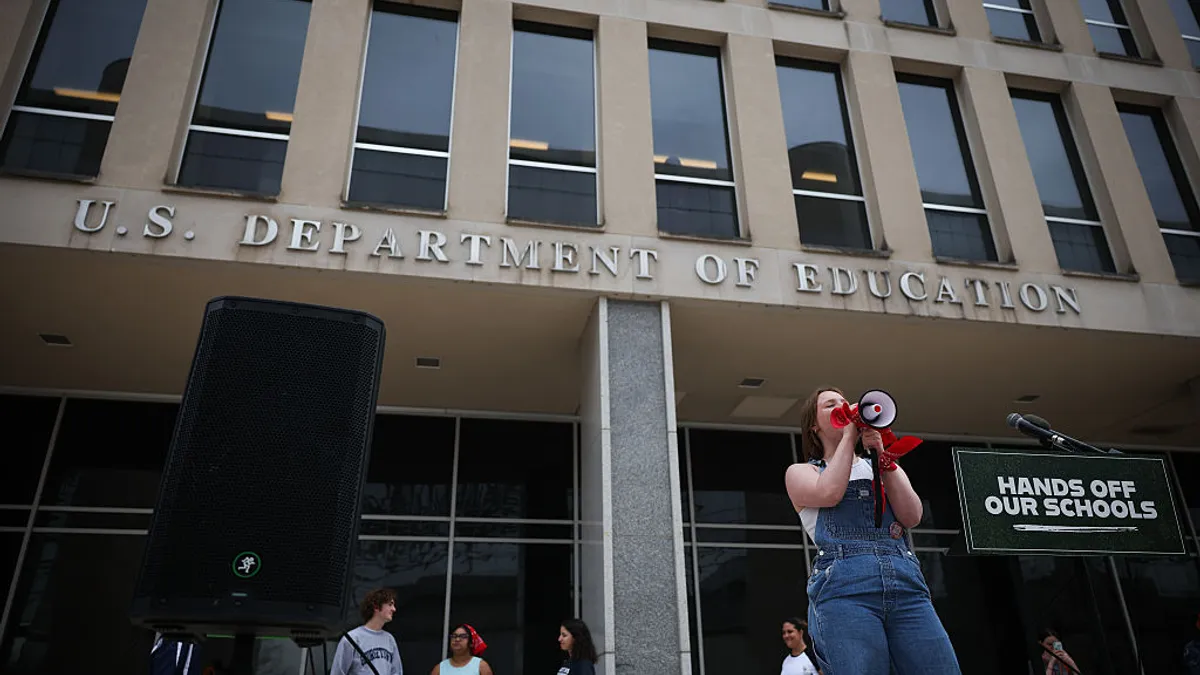Reading and math gaps narrowed between grade 4 and 8 students with and without disabilities — as scores for students with disabilities stayed level with 2019 by one measure and dropped on the others — in the newly released 2022 National Assessment of Educational Progress.
This good news-bad news situation has many special education experts calling for actions and solutions — including personalized instruction, high-dosage tutoring, increased funding and professional development — rather than casting blame on pandemic-induced remote learning.
"I think the dramatic drop in scores is something that highlights the need for us to do more — and in particular, to do more for particular groups of students like students with disabilities," said Lindsay Kubatzky, director of policy and advocacy for the nonprofit National Center for Learning Disabilities.
Kubatzky, along with other special education-focused organizations, pointed out that NAEP scores for students with disabilities have lagged behind those of their peers without disabilities for the past two decades.
Advocates also caution the public from generalizing the performance of students with disabilities to the entire subgroup of students identified as having a disability. Not every general or special education student takes the assessment, and students with the most significant cognitive disabilities do not participate in the testing, they said.
"I would emphasize the point that NAEP, and rightly so, wants to characterize their results as being generalizable to the whole student population, and that isn't the case for students with disabilities," said Candace Cortiella, director and founder of The Advocacy Institute, a nonprofit that works on behalf of children, youth and adults with disabilities.
Still, the NAEP results can yield a helpful national data point for educators, parents and advocates as they prioritize goals for this student group, according to experts.
"I think the narrative shouldn't be that the students are underperforming," said Kubatzky. "It's that it should be more positive that there's a lot of potential out there for students to make really great strides, and we can support them in doing that."
How students with disabilities performed
Special education educators and advocates said the drops in NAEP performances for students with disabilities were no surprise given the overall lower scores for 2022 compared to 2019 — the last time grade 4 and 8 students took the math and reading tests.
The biggest drop in average scores for students with disabilities came in 8th grade math, which declined from 247 in 2019 to 243 in 2022. Grade 4 math scores declined by 2 points, from 214 to 212, and grade 4 reading declined one point, from 184 to 183. The 8th grade reading score of 229 stayed the same between 2019 and 2022.
4th grade NAEP reading gap narrows
Average score gaps between students with and without disabilities narrowed across grades and assessments, although students with disabilities' scores lagged 28 to 40 points behind their peers in 2022.
4th grade math exam performance dips slightly
Some states showed notable increases or declines for students with disabilities. Average math scores for 4th graders with disabilities in Alabama, for example, rose by 15 points, from 196 in 2019 to 211 in 2022. In California, 8th graders with disabilities increased by 5 points in reading, from an average 221 in 2019 to 226 in 2022.
Meanwhile, Idaho's 4th graders with disabilities slipped in reading by 11 points, from 172 in 2019 to 161 in 2022. In West Virginia, 8th grade math scores for students with disabilities dipped 6 points, from 232 in 2019 to 226 in 2022.
Still, the rise in inclusion rates of students with disabilities in the NAEP assessment is a data point some veteran special education advocates say indicates progress, remembering back to the 1990s when performance for students with disabilities wasn't tracked as closely.
In 2010, the National Assessment Governing Board, which oversees the NAEP, issued a policy statement stressing that the exclusion of students with disabilities and English learners be minimized, and that inclusion rates should reach 95%.
In 1996, the grade 4 math inclusion rate for students with disabilities was 73%. For the 2022 math grade 4 and 8 assessment, inclusion rates were 90% and 91%, respectively. Inclusion rates for all students was 98% on the math assessment for both 4th and 8th grade students.
NAEP provides testing accommodations as required in students' individualized education programs or 504 plans. Accommodations can include extended testing time, cues to stay on task and breaks during the exams.
Looking ahead
Special education advocates said school systems could increase not only NAEP performances but also graduation rates and other outcomes of students with disabilities by using federal COVID-19 emergency funding to boost learning, specialized services and teacher supports.
"The bigger issue in front of us is … where can we get information about how much of this money is being spent on kids with disabilities?" Cortiella said.
NCLD recommends states and districts school systems dedicate emergency and other resources toward efforts to accelerate learning, rather than remediation. Best practice approaches include streamlining academic content to focus on grade-level instruction and customizing instruction for individual student's needs.
The recent NAEP data highlights "the incredible need to target resources and provide our nation's educators with support to get students back on track to success," said Amelia Malone, NCLD's director of research and innovation, in an email.
Laurie VanderPloeg, associate executive director of the Council for Exceptional Children and former director of the U.S. Office of Special Education Programs, said local administrators can look at NAEP and other performance data to review the disparities between students with and without disabilities to help guide improvements.
Closing performance gaps will entail consistently monitoring the progress of individual students with disabilities and adjusting instruction and supports accordingly, VanderPloeg said.
In addition to student-level supports, school systems should boost opportunities for professional development in providing appropriate and personalized instruction and for coaching and mentoring of novice teachers, she said. The ongoing special educator shortage, however, is making this challenging, VanderPloeg said.
"If you don't have the qualified personnel with the knowledge, skills and abilities to meet those individualized needs, we can't bridge the gap without the opportunity of that appropriate instruction piece of it," she said.






















